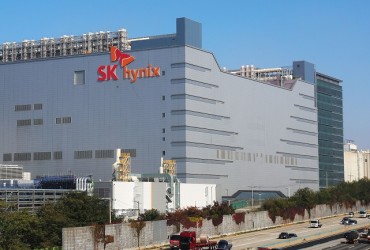SEOUL, June 25 (Korea Bizwire) — A team of researchers has developed a new insulator material that can lead to production of smaller and faster semiconductors, the science ministry said Thursday.
The team from the state-run Ulsan National Institute of Science and Technology (UNIST), Samsung Advanced Institute of Technology and foreign partners has created a amorphous boron nitride dielectric material that is much more resistant to electrical interference, the Ministry of Science and ICT said.
Modern-day chips have become more compact over the years, but this has led to closely packed data and power transmission lines all interfering with each other.
This problem has led to the processing speeds of the latest chips not meeting expectations and even slowing down.
To overcome this, researchers have been scrambling to come up with new insulator materials that can reduce the interference level or permittivity.
“The amorphous boron nitride has exhibited 30 percent less permittivity compared to the widely used porous-hydrogenated oxidized silicon carbon (p-SiCOH) dielectric material,” the ministry said.
The p-SiCOH material has a permittivity number of 2.5, while the newly discovered substance has a much lower number of 1.78, making it a better insulator.
Experts said coming up with a dielectric material of less than 2.5 is critical in making semiconductors more powerful and compact.
UNIST said that actual laboratory tests carried out on capacitor made with the material and placed on conventional back-end-of-line circuits showed excellent insulator characteristics.
“Once the material goes into production, manufacturers will be able to churn out compact and higher performance chips,” Shin Hyeon-suk, a professor of chemistry at UNIST, said.
He added that South Korea, in particular, can capitalize on the material to help it maintain its top standing in the global semiconductor sector.
The research that received state funding has been published in the latest issue of the prestigious Nature journal under the title “Ultralow-dielectric-constant amphorous boron nitride.”
(Yonhap)







